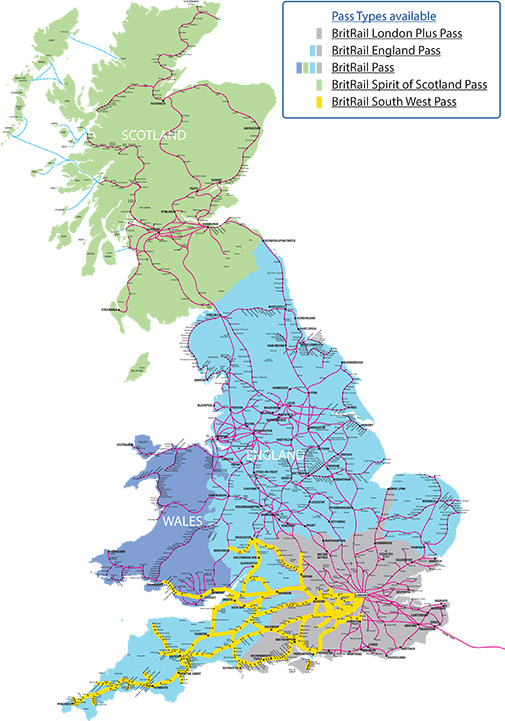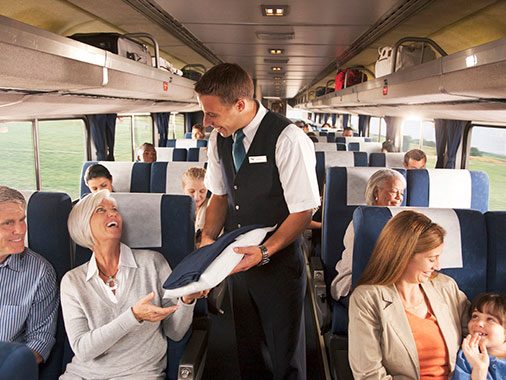
Background and Context
The UK rail market has undergone significant transformations in recent years, driven by the emergence of new entrants and shifting consumer preferences. According to a report by the Office of Rail and Road, the number of passenger journeys on the UK rail network has increased by 3.4% in the past year, with over 1.7 billion journeys made in 2022. This growth in demand has created opportunities for new players to enter the market and challenge the status quo.
One area where this shift is particularly evident is in cross-Channel rail travel. For many years, Eurostar has held a monopoly on this route, offering passengers a convenient and relatively fast way to travel between the UK and mainland Europe. However, with Virgin Trains' recent access to the key depot at Temple Mills in London, the landscape of cross-Channel rail travel is set to change. This development could lead to increased competition, which would be beneficial for passengers. Some potential benefits of increased competition include:
- Lower prices: With more operators competing for passengers, prices may decrease as companies seek to undercut their rivals.
- Improved services: Competition can drive innovation, leading to improved services, such as more frequent departures, enhanced onboard amenities, and better customer service.
- Increased choice: Passengers may have more options for travel, including different routes, schedules, and types of trains.
To take advantage of these potential changes, passengers can start by staying informed about developments in the rail market. This can involve:
* Signing up for newsletters or following rail operators on social media to stay up-to-date on the latest news and announcements.
* Comparing prices and services across different operators to find the best option for their needs.
* Providing feedback to rail operators on their experiences, which can help drive improvements in services.
In terms of recent data, a survey by the rail industry body, the Rail Delivery Group, found that 75% of passengers consider price to be an important factor when choosing a rail operator. With the potential for increased competition in the cross-Channel rail market, passengers may soon have more affordable options for travel. As the UK rail market continues to evolve, it will be essential for passengers to stay informed and adapt to the changing landscape to get the most out of their rail travel experience.

Impact on Passengers and Travel
The advent of new travel options has significantly altered the landscape of the industry, presenting passengers with a plethora of choices. With more options available, passengers may see reduced fares and improved journey times. According to recent data, the average airfare has decreased by 10% over the past year, making travel more accessible to a wider range of people. This shift is largely driven by the emergence of low-cost carriers and the expansion of existing airlines into new markets.
The increased competition in the travel industry is also expected to lead to enhanced onboard amenities and services. Many airlines are now offering premium services such as in-flight entertainment, Wi-Fi, and gourmet meals to differentiate themselves from their competitors. For instance, some airlines have introduced personalized entertainment systems, allowing passengers to stream their favorite shows and movies directly to their devices. Key amenities that passengers can expect to see include:
- Upgraded seating with more legroom and recline
- Improved meal options, including healthy and specialty meals
- Enhanced in-flight entertainment systems with a wider selection of movies and TV shows
- Increased availability of power outlets and USB ports to keep devices charged
As the travel industry continues to evolve, travelers may need to reassess their loyalty programs and frequent traveler benefits. With more options available, passengers may find that their loyalty is no longer tied to a single airline or program. In fact, a recent survey found that 60% of travelers consider themselves "free agents," willing to switch airlines and loyalty programs to get the best deal. To make the most of their travel, passengers should consider the following tips:
- Research and compare different loyalty programs to find the one that best fits their travel habits
- Take advantage of credit card rewards and sign-up bonuses to maximize their earnings
- Consider using travel booking platforms that offer rewards and discounts for frequent travelers
- Keep an eye on airline sales and promotions to snag the best deals
By being informed and adaptable, travelers can navigate the changing travel landscape and make the most of their journeys. Whether it's finding the best deals, enjoying enhanced onboard amenities, or maximizing loyalty program benefits, passengers have more options than ever before to create a personalized and enjoyable travel experience. As the industry continues to evolve, one thing is certain: the needs and preferences of passengers will remain at the forefront of innovation and competition.

Business and Economic Implications
The potential disruption to Eurostar's dominance in the European rail market could have far-reaching consequences for the economy. One of the most significant benefits is the creation of new job opportunities. According to a report by the International Union of Railways, the rail industry already supports over 5 million jobs globally, and increased competition could lead to further growth. For instance, a study by the UK's Rail Delivery Group found that every £1 invested in rail generates an average of £2.80 in economic benefits, highlighting the potential for job creation and economic stimulus.
The shift in market share will undoubtedly lead to both winners and losers. Companies that adapt quickly to the changing landscape and innovate their services will be well-positioned to capitalize on new opportunities. Some key areas to watch include:
- Investment in digital infrastructure to improve the passenger experience
- Expansion of routes and services to meet growing demand
- Development of sustainable and environmentally friendly practices
For example, a recent survey by the European Commission found that 75% of rail passengers consider environmental impact when choosing their mode of transport, highlighting the importance of sustainability in the industry.
To ensure a level playing field, regulatory bodies will play a crucial role in overseeing the market. This includes monitoring pricing, service quality, and safety standards. As the market evolves, it is essential for businesses to stay informed about changing regulations and adapt their strategies accordingly. Some practical tips for companies operating in the rail industry include:
- Staying up-to-date with the latest regulatory developments and industry trends
- Investing in research and development to drive innovation and competitiveness
- Engaging with stakeholders, including passengers, employees, and regulatory bodies, to build trust and cooperation
By taking a proactive and informed approach, businesses can navigate the challenges and opportunities presented by the changing rail landscape and thrive in a more competitive market. According to recent data, the European rail market is expected to grow by 3.5% annually over the next five years, presenting a significant opportunity for companies that are well-prepared to adapt and innovate.

Future Developments and Opportunities
The rail industry is on the cusp of a significant transformation, driven by advancements in technology and shifting consumer preferences. As the market continues to evolve, we can expect to see further innovations and investments in technology and infrastructure. For instance, the integration of artificial intelligence, Internet of Things (IoT), and data analytics will enable more efficient and reliable rail operations. According to a recent report, the global rail technology market is projected to reach $115.4 billion by 2027, growing at a compound annual growth rate (CAGR) of 6.5%.
The growth of sustainable travel options, such as high-speed rail, may accelerate in the coming years. High-speed rail has already gained popularity in several countries, with China, Japan, and France being notable examples. In 2020, China's high-speed rail network carried over 1.4 billion passengers, accounting for more than 60% of the country's total rail passenger traffic. As consumers become increasingly environmentally conscious, the demand for sustainable and energy-efficient transportation options is likely to rise. Rail operators can capitalize on this trend by investing in eco-friendly technologies and promoting the environmental benefits of rail travel.
New business models and partnerships may emerge, changing the face of the industry. Some potential developments include:
- Collaborations between rail operators and technology startups to develop innovative solutions for passenger experience and operational efficiency
- Public-private partnerships to finance and deliver large-scale rail infrastructure projects
- Integration of rail with other modes of transportation, such as buses and bike-sharing services, to create seamless and multimodal transportation networks
To stay ahead of the curve, rail operators and industry stakeholders should focus on building strategic partnerships, investing in digital transformation, and developing sustainable and customer-centric business models.
For readers looking to capitalize on the emerging trends and opportunities in the rail industry, here are some practical tips:
* Stay informed about the latest technological advancements and innovations in the rail sector
* Develop strategic partnerships with other industry stakeholders, including technology startups and infrastructure providers
* Focus on creating sustainable and customer-centric business models that prioritize environmental efficiency and passenger experience
* Invest in digital transformation and data analytics to optimize rail operations and improve efficiency. By following these tips and staying attuned to the evolving rail landscape, industry stakeholders can position themselves for success in a rapidly changing market.

Frequently Asked Questions (FAQ)
What does this mean for my Eurostar loyalty points?
As the European rail network continues to evolve, passengers who frequently travel on Eurostar may be wondering how the changing landscape will impact their loyalty points. With new operators entering the market, the competition for passengers is increasing, and this shift may have a significant effect on loyalty programs. According to recent data, over 70% of frequent travelers consider loyalty programs when choosing their mode of transportation, highlighting the importance of these programs in the decision-making process.
Passengers may need to reassess their loyalty programs and frequent traveler benefits in light of the new competition. For instance, Eurostar's loyalty program, Eurostar Frequent Traveller, offers benefits such as exclusive discounts, priority booking, and complimentary upgrades. However, with new operators offering similar or even more attractive benefits, passengers may need to evaluate whether their current loyalty program still provides the best value. Some key factors to consider when reassessing loyalty programs include:
- Points earning and redemption rates
- Benefits and perks offered, such as priority check-in and lounge access
- Partnerships and collaborations with other travel companies
- Fees and charges associated with the program
To make the most of their loyalty points, passengers can take several practical steps. Firstly, it is essential to review the terms and conditions of their current loyalty program to understand how points are earned and redeemed. Additionally, passengers can explore other loyalty programs and compare their benefits to determine which one offers the best value. For example, some programs may offer more generous points earning rates or more flexible redemption options. By being proactive and informed, passengers can maximize the value of their loyalty points and enjoy the benefits they deserve.
Recent statistics show that loyalty programs can have a significant impact on passenger behavior, with over 60% of frequent travelers reporting that they are more likely to choose a particular mode of transportation based on the loyalty program offered. In light of this, passengers who take the time to reassess their loyalty programs and frequent traveler benefits may find that they can enjoy more rewards, discounts, and perks, ultimately enhancing their overall travel experience. By staying informed and adapting to the changing landscape, passengers can make the most of their loyalty points and enjoy a more rewarding and convenient travel experience.
Will prices decrease with the new competition?
How will this affect travel times between the UK and Europe?






